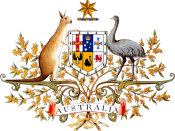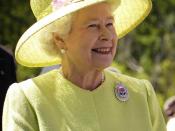Foreign Policy is now more than ever influenced by trade relations. In the past foreign policy was customarily influenced almost solely by military aspirations and endeavours, which meant that Australia (relying heavily on Great Britain for military advocacy) accepted and encouraged Great Britain's authority in international affairs. However over the past century, Foreign Policy has evolved to being:
"... not simply a matter of defence spending and defensive alliances. The likelihood of nations co-operating with one another is dependent upon their trading relations ... "
(Cowie, 1987: 271)
In the past this would not have changed Australia's stance on Foreign Policy because most of Australia's trade was with the United Kingdom and Europe, however as Australia has evolved as a nation and begun to be more independent of Great Britain she has gradually found stronger trading partners in many geographically closer countries like Japan, Korea and China as well as with the United States of America. However the United Kingdom is still an important trading partner because of Australia's history and continued membership in the British Commonwealth. New Zealand is also an important trading partner for Australia, not so much because of their actual statistical contribution to trade, but because of their close history with Australia, their geographical closeness, and their similar ethnicity.
In the financial year of 1955-56 Great Britain was the destination for 32.5% of Australia's exports and was the source of 42.9%, almost half of all of Australia's imports (Cowie, 1987: 273), however by 2001, they received only 4.2% of Australia's exports and contributed only 5.3% of Australia's imports (http://www.dfat.gov.au/publications/stats-pubs/ecostats.pdf). Japan is now Australia's single largest trading partner, receiving 19.4% of exports and supplying 13% of imports (http://www.dfat.gov.au/publications/stats-pubs/ecostats.pdf) compared with 1955-56 when they took delivery of 10.9% of exports and imported only 2.7% of Australia's total...


